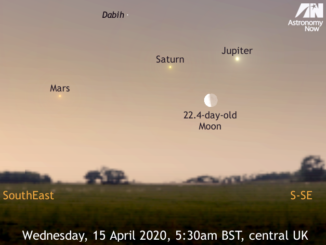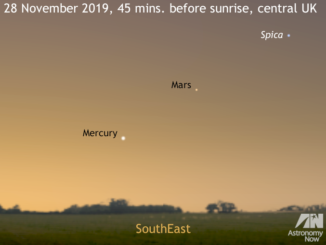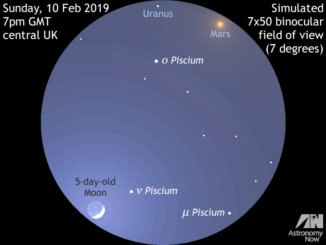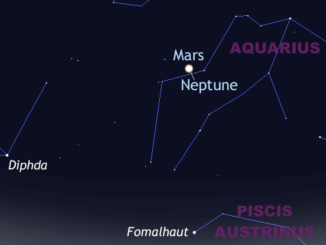
See the waning crescent Moon meet the dawn planets, 15–16 April 2020
There’s a lot of planetary activity in the dawn sky in mid-April. If you’re an early riser in the British Isles, let the waning crescent Moon be your guide to the naked-eye planets Jupiter, Saturn and Mars on 15 and 16 April 2020. Typical 7×50 or 10×50 binoculars will show these attractive conjunctions well, while the smallest of telescopes also reveal some of Jupiter’s bright Galilean moons.









